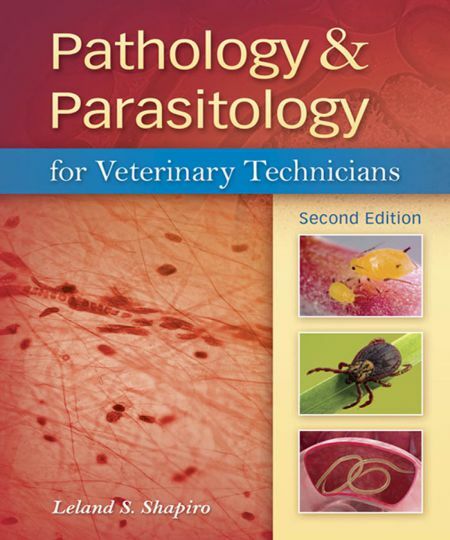Pathology & Parasitology for Veterinary Technicians, 2nd Edition is the publication future professionals turn to for detailed information on pathology and parasitology in veterinary medicine.
Pathology & Parasitology for Veterinary Technicians

It features clear-cut descriptions, case studies, and methodologies for the practical setting. Veterinary professionals and those in the animal, equine, dairy, and poultry fields will benefit from explanations about technical procedures, parasite life cycles, zoonotic potential, diagnosis, and treatment. A review of current literature provides valuable background, and the accompanying CD-ROM Image Library features extensive color images of parasites and various pathologies.
This book is intended for students studying veterinary technology, animal production, and pre-veterinary sciences. A basic understanding of animal anatomy and physiology will assist the student in identifying sites and mechanisms of injurious agents and predicting the effects of the injury.
Veterinarians attempt to prevent disease or make diagnoses of disease every day of their professional lives. A disease occurs because the normal functioning of a cell or organ is affected by some injury. In other words, all diseases are due to cellular injury. The study of cell injury and its result is the science of pathology. You must become familiar with pathology in order to appreciate the effects different diseases have on animals. The information you’ll learn pertaining to how cells respond to injury can help you make predictions about how the affected animals will act. It’s this understanding of injury and response that will aid you while working as a veterinary technician.
The veterinary technician should be able to:
• Explain what happens to cells and tissues when the cells die, and how injured tissues heal.
• Describe how tissues protect themselves using the inflammatory response.
• State the effects on organs when their blood supply increases or decreases.
• Explain how a single cell can become “immortal” and cause cancer.
• Describe the mechanisms of infection and the causes of infectious diseases.
The purpose of this text is not to make its reader a diagnostician of animal disease. That is the job of the veterinarian. However, it is teamwork, in and out of the veterinary setting, that will help promote overall quality animal care and health. The basic understanding of veterinary pathology and parasitology will enable this teamwork to be accomplished and will increase the competency of the veterinary technician in working directly with the veterinarian. With this second edition we incorporated several of the recommendations of previous users of our text, both faculty and students, to make it more “user friendly” and provide additional hands-on techniques practiced in veterinary clinics.
Instant Download For Paid Membership: –
This Book is Available For Premium Members Only (Register Here)
Unlock 3000+ Veterinary eBooks or Go To Free Download
Direct Link For Free Membership: –
| File Size: | 10 MB | |
| Download Link: | Click Here | |
| Password: | PDFLibrary.Net (if Required) | |
